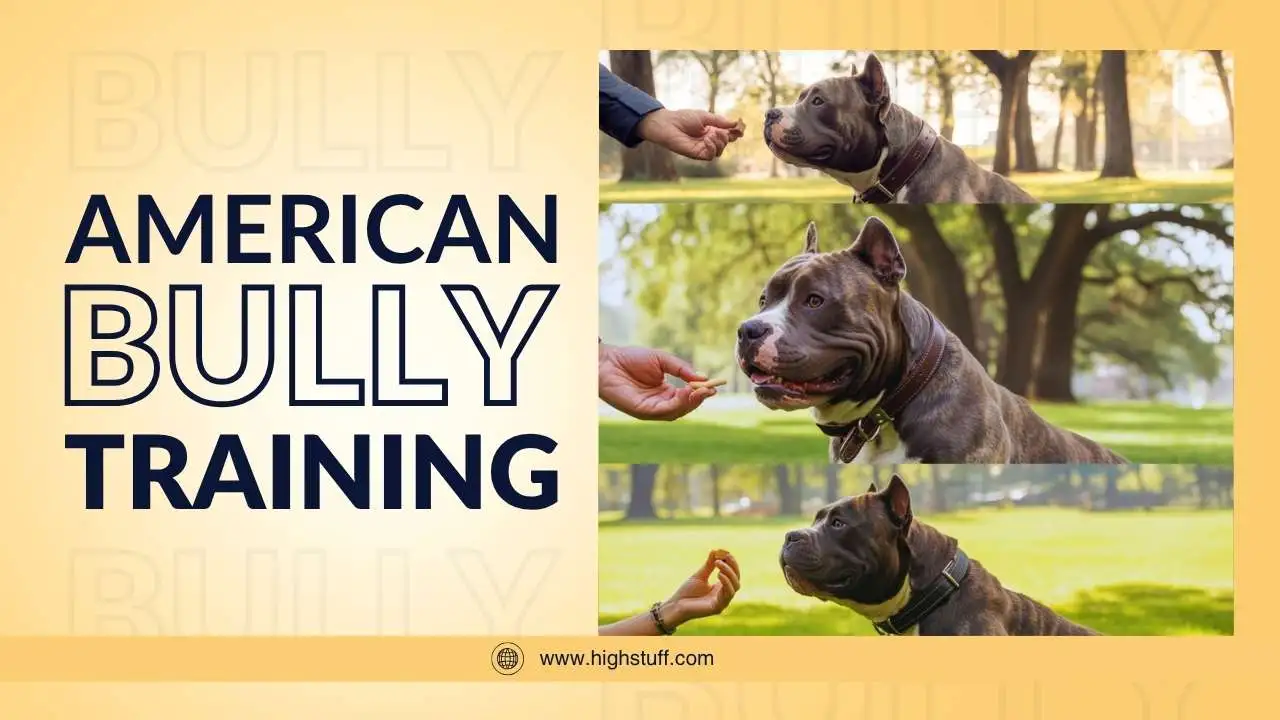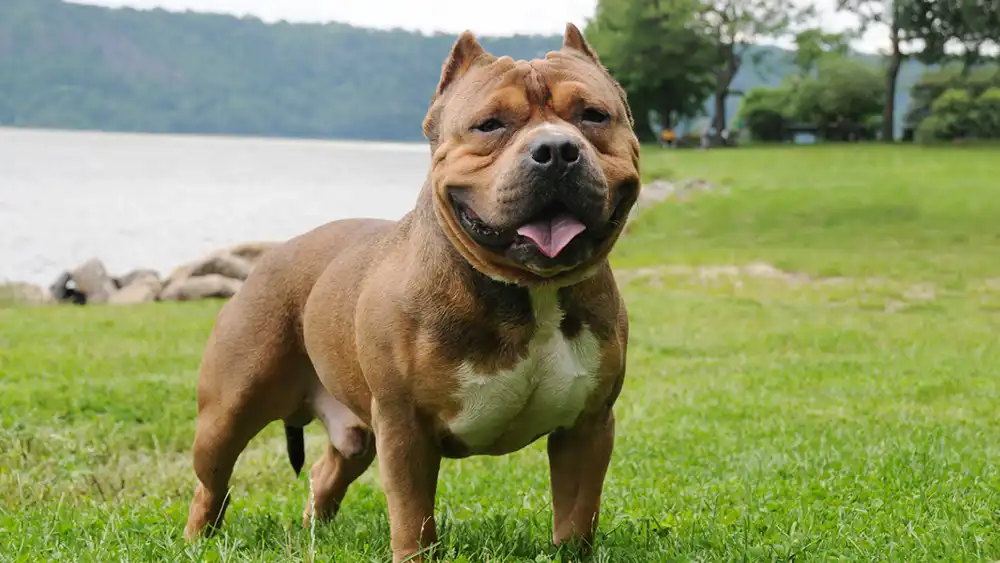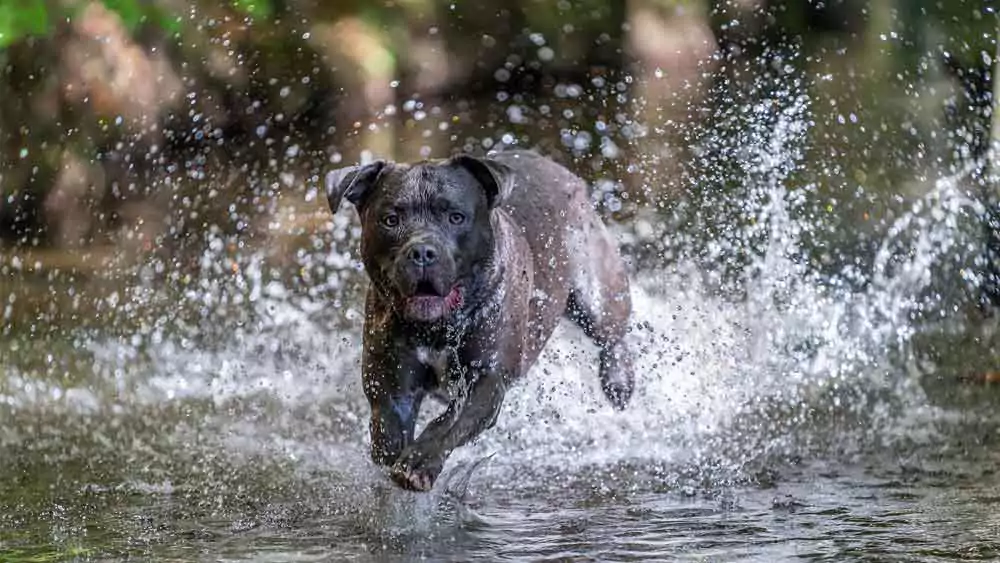How to Train an American Bully Dog: A Comprehensive Guide

American Bullies are smart, loyal, and strong dogs. Not Pit Bulls, though folks get it twisted—they’re a unique breed with a gentle side. Started in the ‘80s, they got official props in 2013. They love pleasing you, so treats and praise work like magic. Harsh stuff like prong collars is a big no; they hurt the bond. So, what makes training an American Bully special? How can you make it fun for both you and your dog? Well, train them kindly and steadily, and your Bully’s going to be the best family pal ever. A 2020 study, mentioned at the American Veterinary Society of Animal Behavior (AVSAB) website, highlights that positive reinforcement boosts learning in strong breeds like Bullies, making training a breeze.
Key Training Tips:
- Start Early: When your puppy is 2 to 3 months old, know that it is time to train him.
- Positive Reinforcement: Treats, praise, and toys are your best friends when it comes to rewarding good behavior.
- Socialization is Key: Socialize your dog while he experiences different places early on.
- Use Gentle Tools: Choose head collars or harnesses instead of choke collars.
When’s the Best Time to Train Your Bully Pup?
Your American Bully puppy training should begin when he is 8 to 12 weeks old. Puppies are quick learners. Why start so young? The earlier you start, the easier it would be for him to develop good habits. Start with short sessions, like 5-10 minutes. Keep them fun—toss in treats or a toy for wins. Be consistent, use clear words like “sit” or “come” daily. Early work stops jumping or chewing later.
Socializing Your American Bully for Confidence
You got to socialize your Bully to make them chill and friendly. Start at 3-16 weeks, showing them people, pets, quiet parks. How do you know they’re ready for new experiences? If they stay calm around new faces, you’re on the right track. Controlled meet-ups with calm dogs or nice folks work best. Give treats for staying cool—builds happy vibes. Don’t toss them into crazy busy spots right away; slow introductions keep fear or grumpiness away. Socializing means your Bully handles new stuff like a pro.
Choosing the Right Training Environment

Not sure where to train your Bully? Kick off at home—living room or backyard with no distractions. Helps them nail “sit” or “stay” without chaos. As they get it, try quiet parks for leash training. Same commands everywhere are super important. Train you Bully in the yard for weeks before hitting the dog park to make it smooth. Add more distractions bit by bit to grow their confidence.
How Do You Crate Train and Housebreak a Bully?
Crate training makes the crate a cozy, safe spot—not a punishment. Pick one big enough for your Bully to stand and spin. Toss treats in, let them explore, praise when they go inside. Housebreaking? Set a schedule—out after food, naps, play, with a cue like “go potty.” Clean messes with enzyme sprays to kill smells. Stay patient, keep it steady, and crate and potty training’s a breeze.
Which Commands Should You Teach First?
Start with the big ones: “sit,” “stay,” “come,” “down,” “leave it.” They’re the base for good behavior. For “sit,” hold a treat over their nose, say “sit,” reward when they plop down. “Come”? Crouch, arms open, happy voice—praise as they run to you. Short, clear words plus hand signals—Bullies dig both. Why use hand signals? They help your dog understand even from a distance. Keep sessions quick to hold their focus. These tricks stop stuff like chasing squirrels dead in their tracks.
Best Training Methods for American Bullies

Positive reinforcement rules for American Bully training. Treats, toys, kind words for good moves—never hit or yell, it breaks trust. Clicker training’s cool—a click marks the right move. Same commands, same times every day. How do you keep American bullies engaged? Short, playful sessions keep them hooked. Skip harsh stuff like e-collars—Bullies are softies who love encouragement.
How to Fix Bad Behaviors in Your Bully?
Chewing shoes? Nipping? Don’t punish—redirect. Swap the shoe for a chew toy, praise when they use it. Nipping? Toss a toy or say “sit” to stop it. Jumping? Turn away, reward calm. Barking too much? More exercise—bored Bullies get wild. You can fix your Bully’s digging with daily puzzle toys; it will help burn that brain energy. Set up your place smart—baby gates, hide kids’ toys—to stop trouble before it starts.
Staying Patient and Consistent in Training
Training a Bully takes time, so stick with it. Same commands, like “heel” on walks, avoid mix-ups. End with a treat, even if it’s slow going. What if they’re not getting it? Don’t lose your cool—dogs learn at their own speed. Patience makes trust, and little wins build a solid dog.
When to Call in a Professional American Bully Trainer?
Aggression, fear, or leash yanking? Get a pro American bully trainer. Find ones who use positive vibes—check reviews or ask your vet. Puppy classes or obedience groups help with basics and socializing. Pros teach you to talk better with your dog. Skip trainers with harsh methods—they mess up sensitive Bullies.
Gear and Treats To Make Training Easier
For American Bully training, grab a strong harness or head collar—choke collars are bad news. Clickers mark good moves fast. Tasty treats like chicken bits or Bully Max keep them pumped. Chew toys, puzzle games like treat balls, fight boredom. Join Bully groups online or local for tips. A solid crate helps housebreaking. These make training smooth and way more fun.
Why’s Exercise Key for Good Behavior?
Bullies got energy to burn, so daily workouts are a must. A 30-60 minute walk, fetch, or tug games cut down bad stuff like barking or digging. Mix training in—practice “sit” on walks or “come” during play. You can use agility games with your Bully to keep him chill at home. Exercise plus brain games makes a happy, well-behaved Bully less likely to act up.
Wrap-Up
Training your American Bully’s a ride that builds a killer bond. Positive vibes, early socializing, steady routines—you’ll get a chill, awesome buddy. Start young, keep cool, use fun tools. At home or the park, every step makes you closer.
Got a Bully? Drop your training tips or questions below—let’s hear how it’s going!
FAQs About American Bully Training
Well, if not trained properly, they can pose a threat to you and the public, especially the XL breed. The XL breed was banned in the UK for different reasons.
Largely, no. Both classic and standard bullies have a similar nature. However, classic breed is a little more energetic owing to their smaller structure and enhanced agility.
Not too late! Short, treat-filled sessions on “sit” or “come.” Obedience classes give extra help.
Give chew toys, praise for using them. More exercise and puzzles stop boredom chewing.
Yup! Start slow with treats, and make it cozy. Short times in the crate, build up as they chill.
Small chicken bits or Bully Max treats rock. Keep them tiny to avoid overfeeding.
Basics take months with daily work. Keep training permanent—Bullies learn their whole life.

news via inbox
Sign up and never miss out on the latest news and updates at HighStuff




